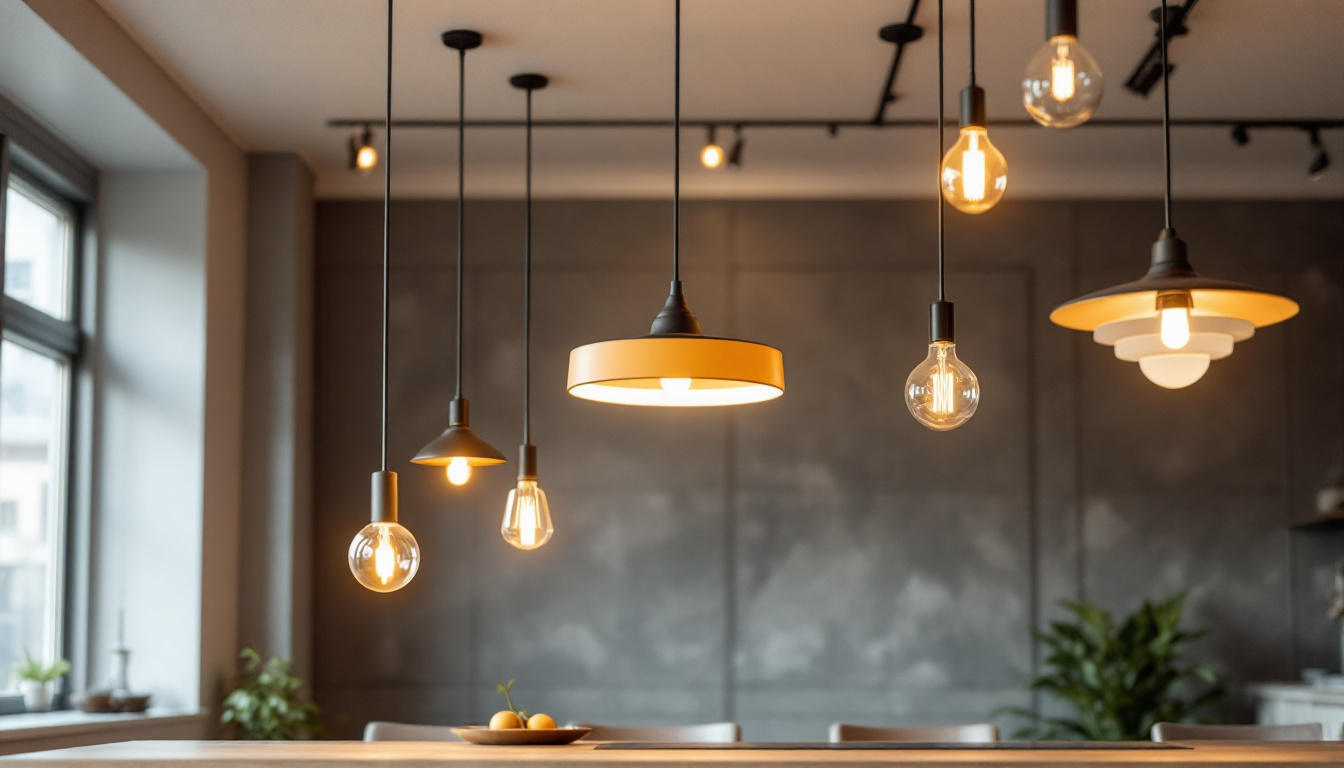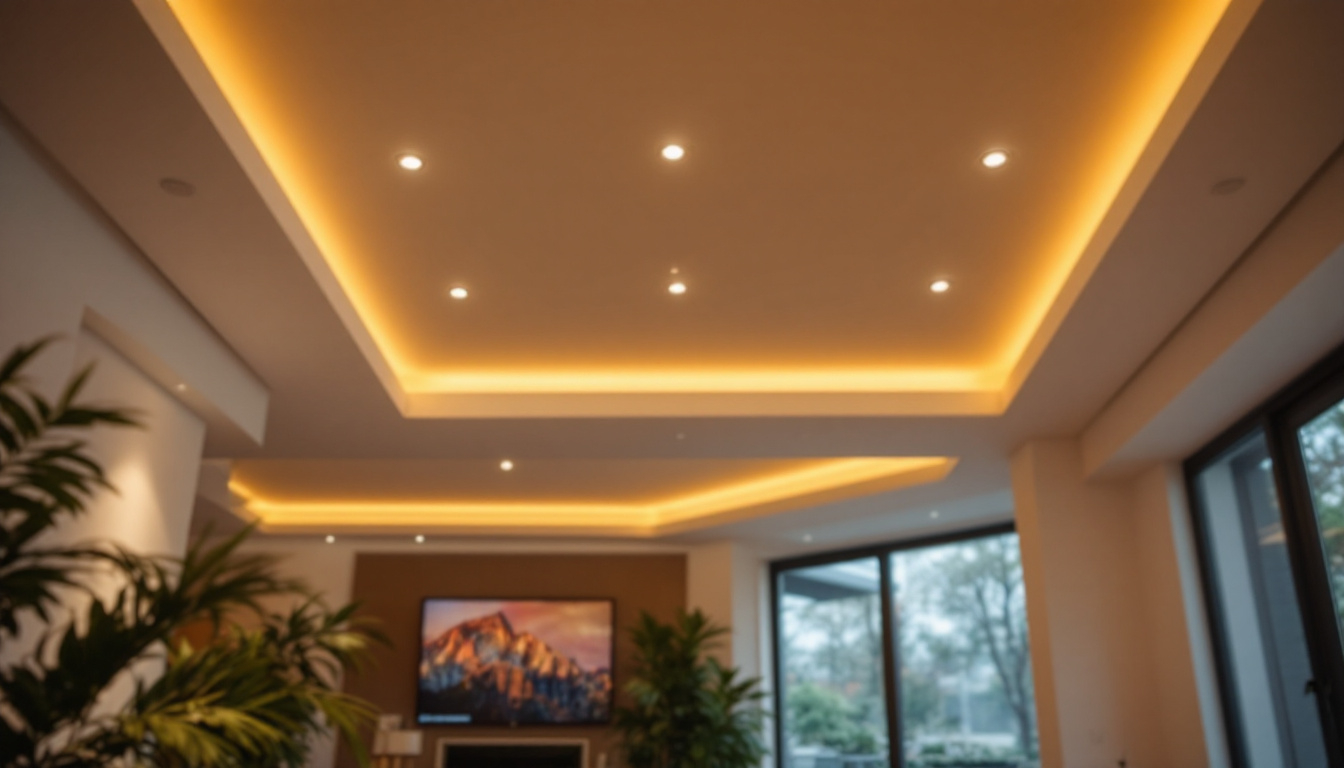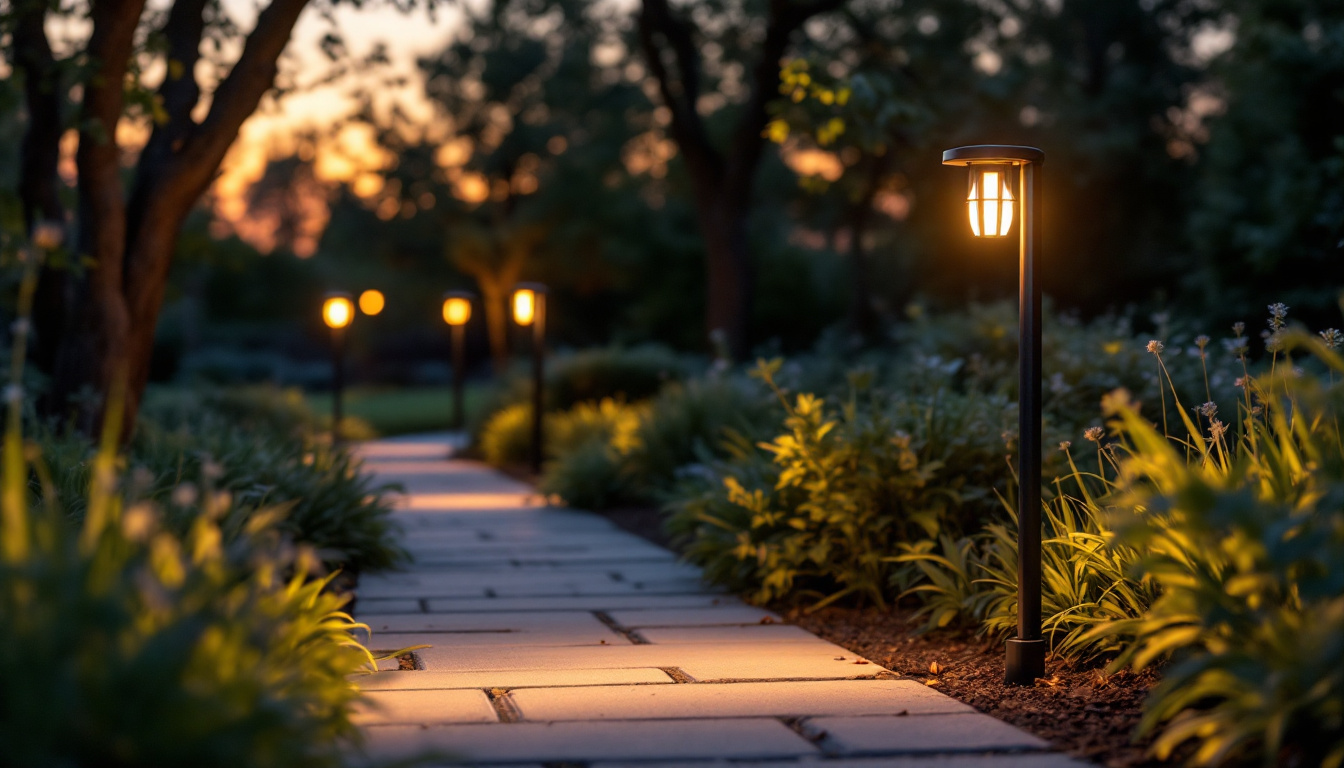
Pendant lights have become a staple in modern interior design, offering both functionality and aesthetic appeal. For lighting contractors, understanding the best practices for selecting, installing, and maintaining these fixtures is essential. This article delves into the nuances of pendant lighting, providing insights that can enhance the quality of work and client satisfaction.
Pendant lights are versatile fixtures that hang from the ceiling, often suspended by a cord, chain, or rod. They come in various styles, sizes, and materials, making them suitable for numerous applications—from residential spaces to commercial settings.
One of the primary advantages of pendant lights is their adaptability. They can serve as task lighting above kitchen islands, ambient lighting in dining areas, or accent lighting in living rooms. This versatility allows contractors to recommend specific fixtures based on the needs and preferences of their clients.
Moreover, pendant lights can be grouped or layered to create a more dynamic lighting scheme. By combining different styles and sizes, contractors can craft unique visual statements that enhance the overall design of a space. For instance, a cluster of small, colorful pendants can add a playful touch to a child’s playroom, while a series of sleek, metallic pendants can lend a sophisticated air to a modern office environment. This creative approach not only elevates the aesthetic appeal but also provides functional lighting tailored to various activities.
When selecting pendant lights, style is crucial. Options range from industrial and rustic to modern and minimalist. Each style can evoke different emotions and complement various design themes. Contractors should consider the existing decor and the desired ambiance when making recommendations.
Additionally, the scale of the pendant light should match the space. A large, bold pendant can serve as a focal point in a spacious room, while smaller pendants may be more suitable for intimate settings. Understanding these dynamics helps contractors provide tailored solutions that resonate with their clients. For example, in a high-ceilinged foyer, a grand chandelier-style pendant can create a dramatic entrance, while in a cozy nook, a single, understated pendant can provide just the right amount of light without overwhelming the space. Furthermore, the choice of materials—whether glass, metal, or fabric—can significantly impact the overall look and feel, allowing for even more customization to suit individual tastes and functional needs.
Proper installation is critical to ensure the safety and functionality of pendant lights. Lighting contractors must adhere to specific guidelines to achieve optimal results.
One of the most important factors in pendant light installation is height. The ideal height for pendant lights varies depending on their purpose and location. For instance, pendants above a kitchen island should typically hang 30 to 36 inches above the countertop, while those in dining areas may be positioned 28 to 34 inches above the table.
Contractors should also consider the overall ceiling height. In spaces with higher ceilings, longer cords or chains may be necessary to maintain proportionality. Ensuring the correct height not only enhances functionality but also contributes to the aesthetic appeal of the space. Furthermore, it is vital to account for the scale of the pendant light itself; larger fixtures may require a slightly higher installation to avoid overwhelming the space, while smaller pendants can be hung lower to create an intimate atmosphere. This balance between height and scale can dramatically influence the room’s ambiance and overall design coherence.
Ensuring proper electrical connections is paramount during installation. Contractors must verify that the electrical box is rated to support the weight of the pendant light. Additionally, using the correct gauge of wire and ensuring secure connections will prevent potential hazards.
It is also advisable to install dimmer switches for pendant lights. This allows homeowners to adjust the brightness according to their needs, enhancing the versatility of the lighting. Properly installed dimmers can elevate the overall experience of a space, making it more inviting and functional. Beyond dimmers, incorporating smart lighting technology can further enhance the user experience. Smart bulbs and systems allow for remote control and scheduling, enabling homeowners to customize their lighting based on time of day or activity. This modern approach not only adds convenience but can also contribute to energy savings, making it a practical consideration for any lighting installation.
Once installed, pendant lights require regular maintenance to keep them looking their best and functioning efficiently. Contractors should educate their clients on proper care and maintenance practices.
Dust and grime can accumulate on pendant lights over time, dulling their shine. Regular cleaning is essential to maintain their appearance. Contractors should recommend using a soft, damp cloth for cleaning, avoiding harsh chemicals that could damage the finish.
For glass or crystal pendants, a gentle glass cleaner can be used to restore clarity. It is important to remind clients to turn off the power before cleaning to ensure safety. Regular maintenance not only preserves the aesthetic appeal but can also prolong the life of the fixtures.
Periodic inspections are crucial to identify any potential issues before they become significant problems. Contractors should advise clients to check for loose connections, flickering bulbs, or any signs of wear and tear. Addressing these issues promptly can prevent more extensive damage and ensure the longevity of the lighting fixtures.
The world of pendant lighting is constantly evolving, with new trends emerging regularly. Staying updated on these trends can help contractors offer fresh ideas to their clients.
With the rise of smart home technology, smart pendant lights have gained popularity. These fixtures can be controlled via smartphone apps or voice-activated devices, allowing homeowners to adjust brightness, color, and even set schedules.
Contractors should familiarize themselves with the installation of smart lighting systems, as they often require additional wiring or hub setups. Educating clients about the benefits of smart lighting can enhance their overall experience and satisfaction with their lighting choices.
As sustainability becomes increasingly important, eco-friendly pendant lights are on the rise. These fixtures often utilize LED bulbs, which consume less energy and have a longer lifespan compared to traditional incandescent bulbs.
Contractors can recommend energy-efficient options that not only reduce electricity bills but also contribute to a more sustainable environment. Highlighting the benefits of eco-friendly lighting can resonate well with environmentally conscious clients.
For lighting contractors, creating a cohesive lighting plan is essential for achieving a harmonious design. Pendant lights should complement other lighting sources in the space, such as recessed lighting, wall sconces, or floor lamps.
Layering light involves using multiple sources to create a well-lit environment. Pendant lights can serve as one layer, while ambient lighting provides general illumination, and task lighting focuses on specific areas. This approach not only enhances functionality but also adds depth and dimension to a room.
Contractors should encourage clients to consider their lighting needs in different scenarios. For example, pendant lights can provide focused illumination for tasks like cooking or reading, while softer ambient lighting can create a cozy atmosphere for relaxation.
The color temperature of pendant lights can significantly impact the mood of a space. Warmer tones (around 2700K to 3000K) create a cozy and inviting ambiance, while cooler tones (above 4000K) offer a more modern and energetic feel.
Contractors should guide clients in selecting the appropriate color temperature based on the desired atmosphere. This consideration can greatly enhance the overall experience of the space, making it more enjoyable and functional.
Effective communication with clients is vital for lighting contractors. Educating clients about the importance of pendant lighting and its various aspects can lead to more informed decisions and greater satisfaction.
When presenting pendant light options, contractors should take the time to explain the benefits and features of each choice. This includes discussing materials, styles, and the impact on the overall design. Providing visual aids or examples can help clients visualize how different options will look in their space.
Additionally, discussing the long-term benefits of quality lighting can help clients appreciate the investment. Highlighting energy efficiency, durability, and aesthetic appeal can reassure clients that they are making a wise choice.
Involving clients in the decision-making process fosters a sense of ownership and satisfaction. Contractors can encourage clients to express their preferences and ideas, leading to a more collaborative approach.
By actively engaging clients in discussions about their lighting needs and preferences, contractors can tailor solutions that align with their vision. This collaborative effort not only enhances the final outcome but also builds trust and rapport between contractors and clients.
Pendant lights are an integral component of modern lighting design, offering both functionality and style. For lighting contractors, understanding best practices in selection, installation, maintenance, and client communication is essential for delivering exceptional results.
By staying informed about trends and innovations in pendant lighting, contractors can provide clients with tailored solutions that enhance their spaces. Ultimately, a well-executed lighting plan can transform a room, creating an inviting and aesthetically pleasing environment.
Incorporating these best practices into daily operations will not only improve the quality of work but also elevate client satisfaction. As the demand for stylish and functional lighting continues to grow, lighting contractors who prioritize these principles will thrive in the competitive landscape.
Ready to elevate your lighting projects with the latest pendant light designs and technology? At LumenWholesale, we provide lighting contractors like you with the highest quality, spec-grade lighting products at prices that can’t be beaten. Say goodbye to local distributor markups and hello to our extensive selection that meets rigorous industry standards. With free shipping on bulk orders, you can stock up on premium lighting solutions and pass the savings onto your clients. Don’t compromise on quality or value—discover wholesale lighting at the best value today and light up your clients’ spaces with confidence and style.

Discover expert insights from lighting contractors on optimizing your space with recessed ceiling light fixtures.

Discover the essential insights into path lighting with answers to the most common questions lighting contractors face.

Discover essential insights into Dusk Till Dawn outdoor lighting with this comprehensive guide tailored for lighting contractors.

Discover innovative cost-saving strategies for lighting contractors with T5 lamps.